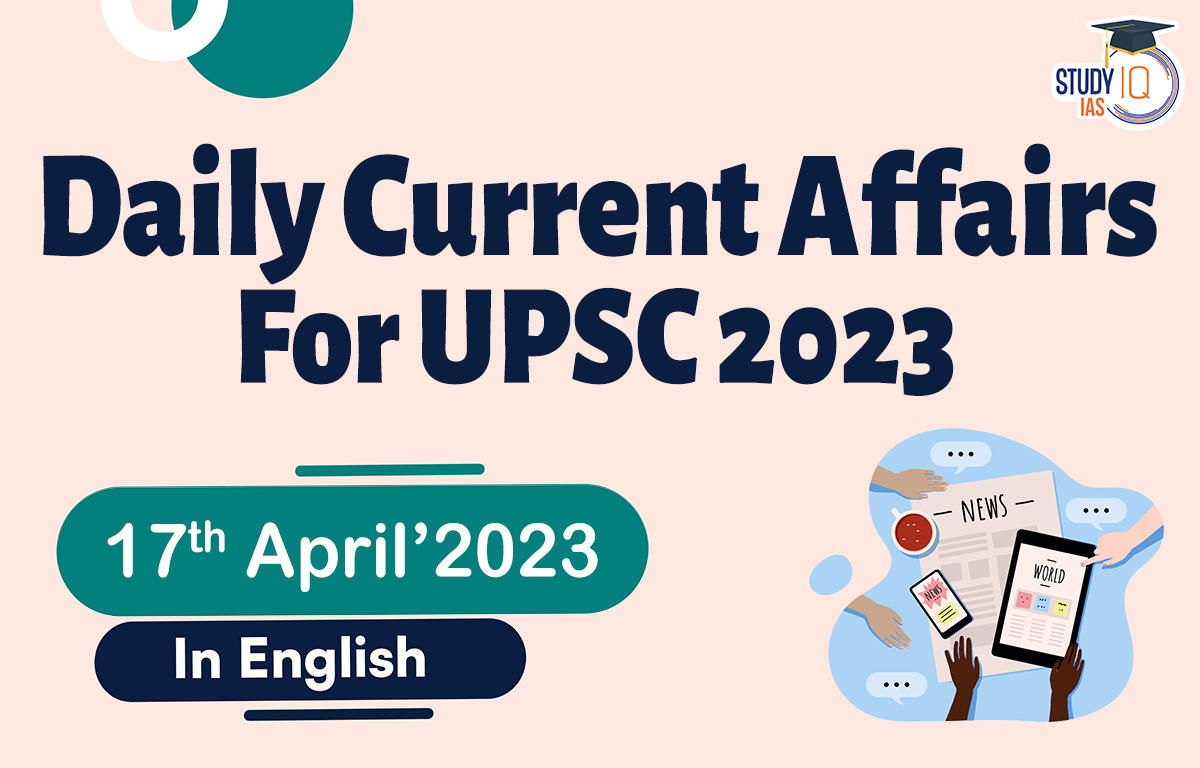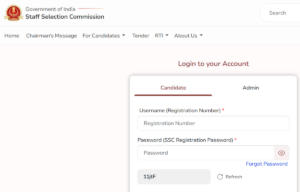Daily Current Affairs for UPSC 2023
Q) Recently seen in news, the ‘India Ransomware Report 2022’ is published by which one of the following organizations?
- NITI Aayog
- Indian Cybercrime Coordination Centre
- The Indian Computer Emergency Response Team
- National Cyber Crime Research and Innovation Centre
Daily Current Affairs for UPSC – 15 April 2023
Explanation:
- Option (3) is correct: India saw a 53 per cent increase in ransomware incidents in 2022 (year-over-year), according to the “India Ransomware Report 2022″ published by the Indian Computer Emergency Response Team (CERT-In). As per the report overall, there is 53% increase in Ransomware incidents reported in 2022 Year over Year. Ransomware players targeted critical infrastructure organisations and disrupted critical services to pressurize and extract ransom payments. IT (Information Technology) & ITeS (Information Technology enabled Services) was majorly impacted sector followed by Finance and Manufacturing. Variant wise, Lockbit was majorly seen variant in the Indian context followed by Makop and DJVU/Stop ransomware. Many new variants were observed in 2022 such as Vice society, BlueSky etc. Leaked Ransomware source codes are getting forked to launch new Ransomware brands. At large enterprise level, Lockbit, Hive and ALPHV/BlackCat, Black Basta variants became major threats. Makop and Phobos Ransomware families mainly targeted medium and small organisations. At individual level, Djvu/Stop variants continued dominance in attacks over the past few years.
Q) With reference to James Webb Space Telescope (JWST), consider the following statements:
- It observes the evolution of galaxies in the infrared spectrum of light.
- JWST also aims to investigate the properties of dark matter and dark energy.
- The JWST is a collaboration between NASA, the European Space Agency (ESA), and the Canadian Space Agency (CSA).
Which of the statements given above is/are correct?
- 1 and 2 only
- 1 and 3 only
- 2 and 3 only
- 1, 2 and 3
Explanation:
- Statements 1 and 3 are correct: The James Webb Space Telescope (JWST) is a large, space-based observatory that is set to be the successor to the Hubble Space Telescope. It studies the formation of stars and planetary systems in our own galaxy and in other galaxies in infrared wavelengths of light. It is named after James E. Webb, a former administrator of NASA who played a significant role in the Apollo program. The JWST is a collaboration between NASA, the European Space Agency (ESA), and the Canadian Space Agency (CSA) which was launched in December 2021.
- Statement 2 is correct: James Webb Space Telescope (JWST) observe the first galaxies that formed in the early universe and learns more about the evolution of galaxies over time. It search for and study the atmospheres of potentially habitable exoplanets, which could help us learn more about the potential for life beyond our solar system. It aims to study the formation and evolution of black holes and other objects in the universe that emit high-energy radiation. It aims to investigate the properties of dark matter and dark energy, which are believed to make up the majority of the matter and energy in the universe, but which cannot be directly observed.
Q) Consider the following statements about Overseas Citizenship of India (OCI):
- The OCI cardholders can live and work in India for an indefinite period.
- A spouse of an OCI holder whose marriage has been registered for a period of not less than five years can also become an OCI person.
- The OCI card was introduced through the Citizenship Act of 2001.
Which of the statements given above is/are correct?
- 1 only
- 1 and 2 only
- 2 and 3 only
- 1, 2 and 3
Explanation:
- Statement 1 is correct but statement 3 is incorrect: Overseas Citizenship of India (OCI) is an immigration status that allows a foreign citizen of Indian origin or their spouses to live and work in India for an indefinite period. OCI aimed to meet the demands of the Indians living overseas who insisted on dual citizenship. Indian Constitution does not have provisions for dual citizenship. The OCI card was introduced in 2005 by amending the Citizenship (Amendment) Act of 2005. The government decided to merge the Person of Indian Origin scheme with the OCI scheme in 2015. Individuals who held a PIO card were deemed to be OCI Cardholders.
- Statement 2 is incorrect: The Overseas Citizenship of India status of an actor has been cancelled by the Home Ministry. OCI person is the one:
- who was a citizen of India on or after January 26, 1950; or
- who was eligible to become a citizen of India on that date; or
- who is a child or grandchild of such a person; or
- who is a minor child and whose both parents are citizens of India or one of the parents is a citizen of India; or
- who is a spouse of an Overseas Citizen of India holder whose marriage has been registered and subsisted for a continuous period of not less than two years.
According to Section 7A of the rules, an applicant is not eligible if he, his parents or grandparents have ever been a citizen of Pakistan or Bangladesh.
Q) With reference to Magnetoresistance, consider the following statements:
- It is the resistance experienced by a space rocket when it crosses Earth’s magnetosphere.
- The ‘giant magnetoresistance’ is observed in a magnetic material that consists of two magnetic layers separated by an insulating layer.
- The ‘tunnel magnetoresistance’ is high if the magnetic fields of the two layers are parallel.
Which of the statements given above is/are not correct?
- 1 and 2 only
- 2 only
- 1 and 3 only
- 1, 2 and 3
Explanation:
- Statements 1 and 2 are incorrect: Recently, researchers in the U.K., led by Nobel laureate Andre Geim, have discovered another property of graphene known as magnetoresistance. Magnetoresistance refers to the change in the electrical resistance of a material when it is subjected to an external magnetic field. This phenomenon is observed in a wide range of materials, including metals, semiconductors, and insulators. There are two types of magnetoresistances: Giant magnetoresistance (GMR) is observed in thin metallic films that are separated by a non-magnetic spacer layer and Tunnel magnetoresistance (TMR) is observed in magnetic tunnel junctions, which consist of two magnetic layers separated by an insulating layer.
- Statement 3 is correct: In TMR, the resistance of the material changes due to the quantum mechanical tunneling of electrons across the insulating layer. When the magnetic fields of the two layers are parallel, the tunneling probability is high, and when they are antiparallel, the tunneling probability is low, resulting in a change in resistance. TMR is used in various applications, including MRAM, magnetic field sensors, and spintronics.
Q) Consider the following statements about Chabahar port:
- It is a seaport in Sistan-Balochistan province of Iran on the Persian Gulf.
- Shahid Kalantari and Shahid Beheshti are two separate ports associated with it.
Which of the statements given above is/are correct?
- 1 only
- 2 only
- Both 1 and 2
- Neither 1 nor 2
Explanation:
- Statement 1 is incorrect but statement 2 is correct: India hosted the first meeting of the India-Central Asia Joint Working Group (JWG) on the Chabahar port. Chabahar Port is a seaport in Sistan-Balochistan province of Iran, on the Gulf of Oman. It consists of two separate ports named Shahid Kalantari and Shahid Beheshti. It is the only Iranian port with direct access to the ocean as it provides a gateway to the Arabian Sea and beyond. It provides India and Afghanistan with an alternative route to access the Central Asian markets, bypassing Pakistan. The Chabahar port is considered a gateway to golden opportunities for trade by India, Iran and Afghanistan with central Asian countries. Its geographic proximity to Afghanistan, Pakistan, India and International North-South Transport Corridor (INSTC) gives it the potential to develop into one of the most important commercial hubs. In 2016, India, Iran, and Afghanistan signed a trilateral agreement to develop the Chabahar port and related infrastructure, such as roads and railways, with India committing $500 million for the project. The port has been exempted from the US sanctions on Iran, allowing India to continue investing in the project. India has already completed the first phase of the development of the port, and work on the second phase is currently underway.


 Kargil Vijay Diwas 2024, Date, History a...
Kargil Vijay Diwas 2024, Date, History a...
 SSC CGL Apply Online 2024, Last Date is ...
SSC CGL Apply Online 2024, Last Date is ...
 SSC Stenographer 2024 Notification Out a...
SSC Stenographer 2024 Notification Out a...

















